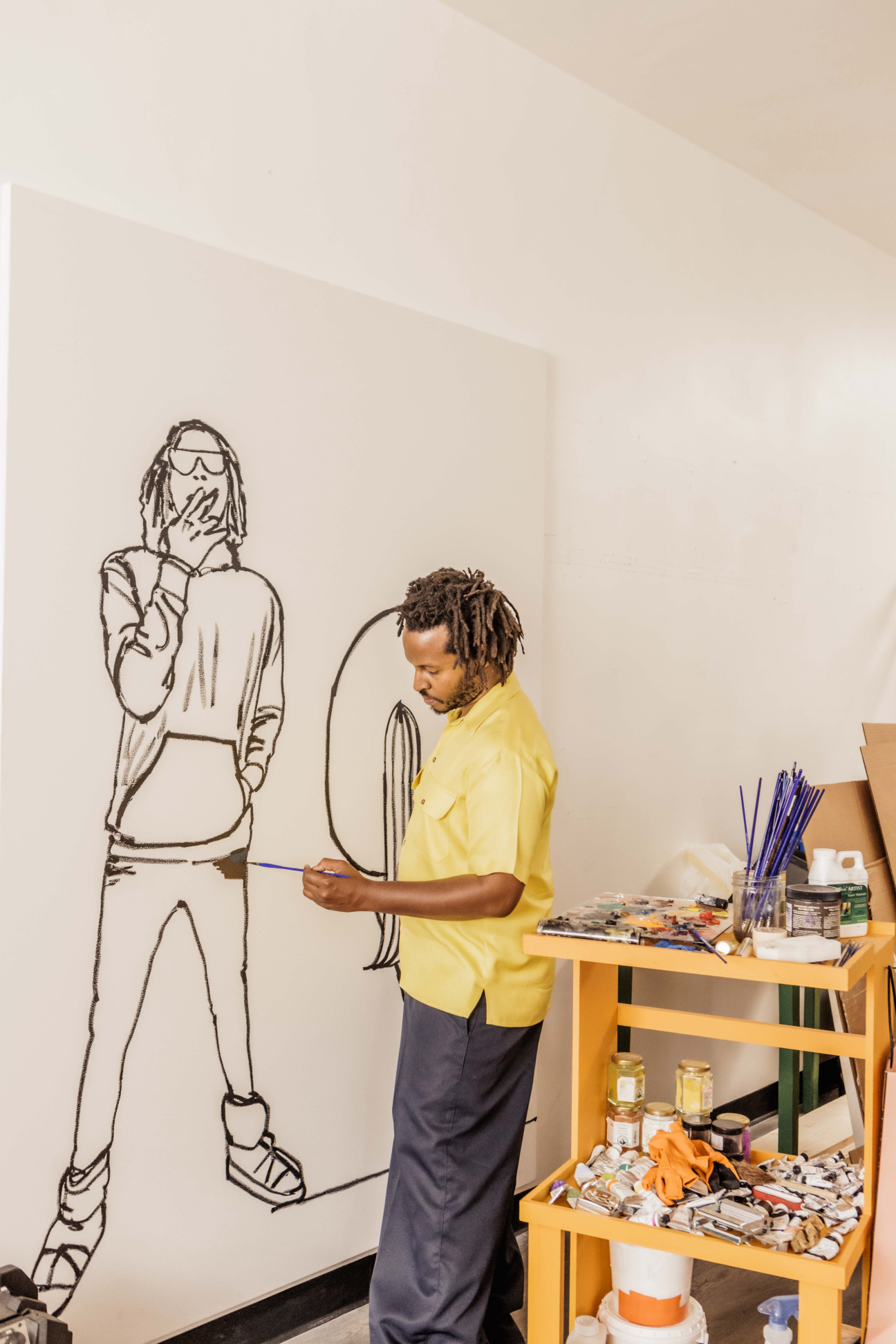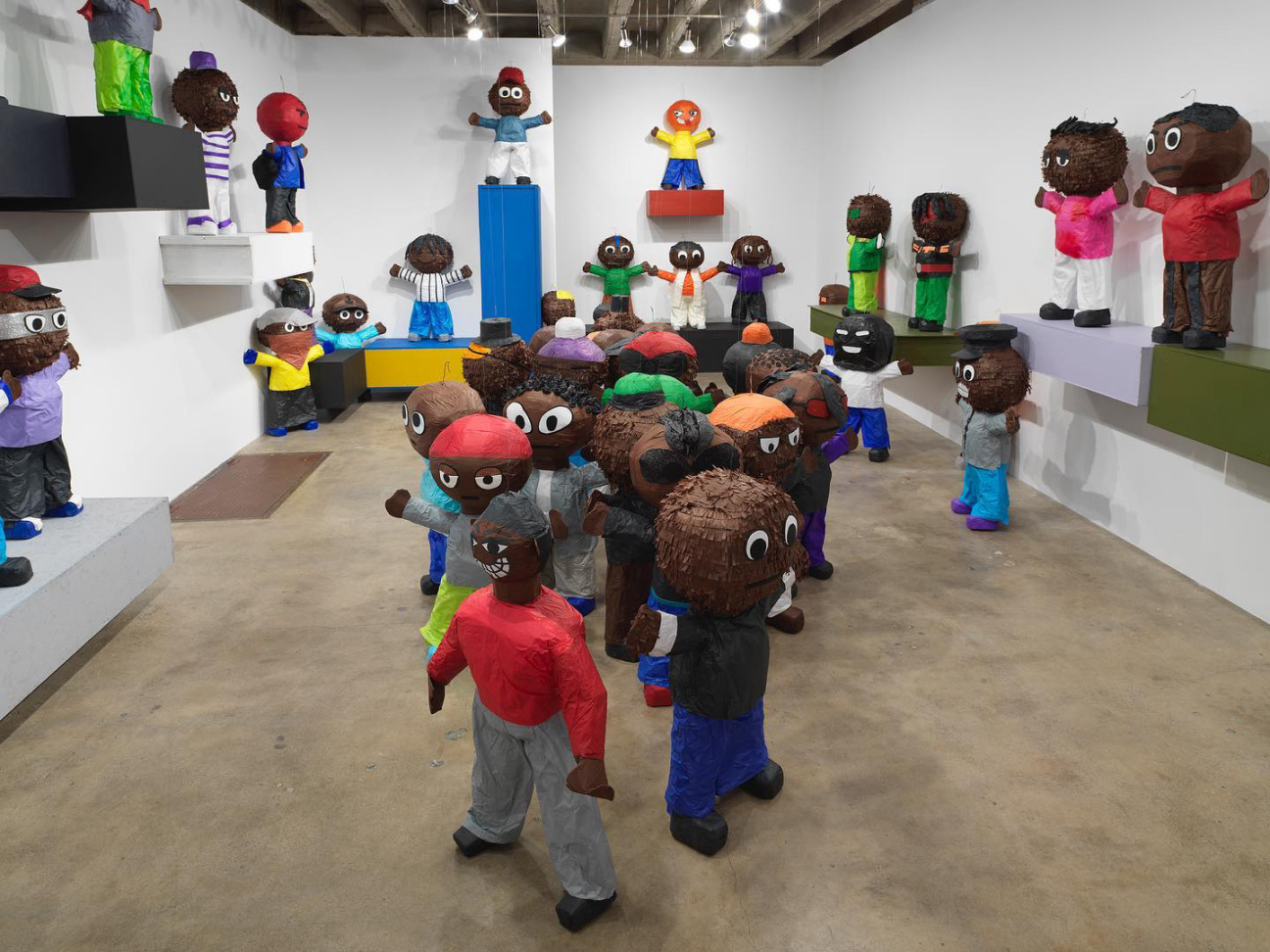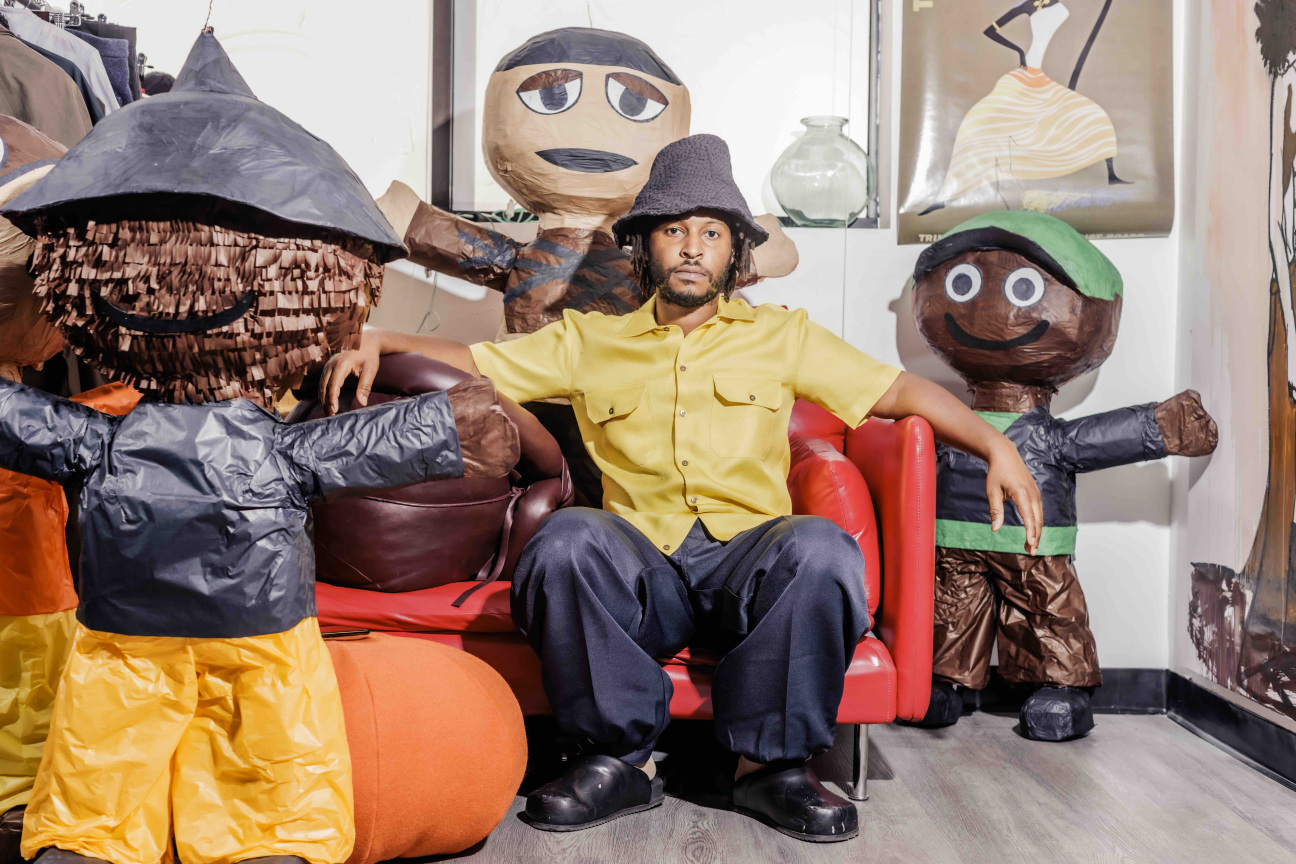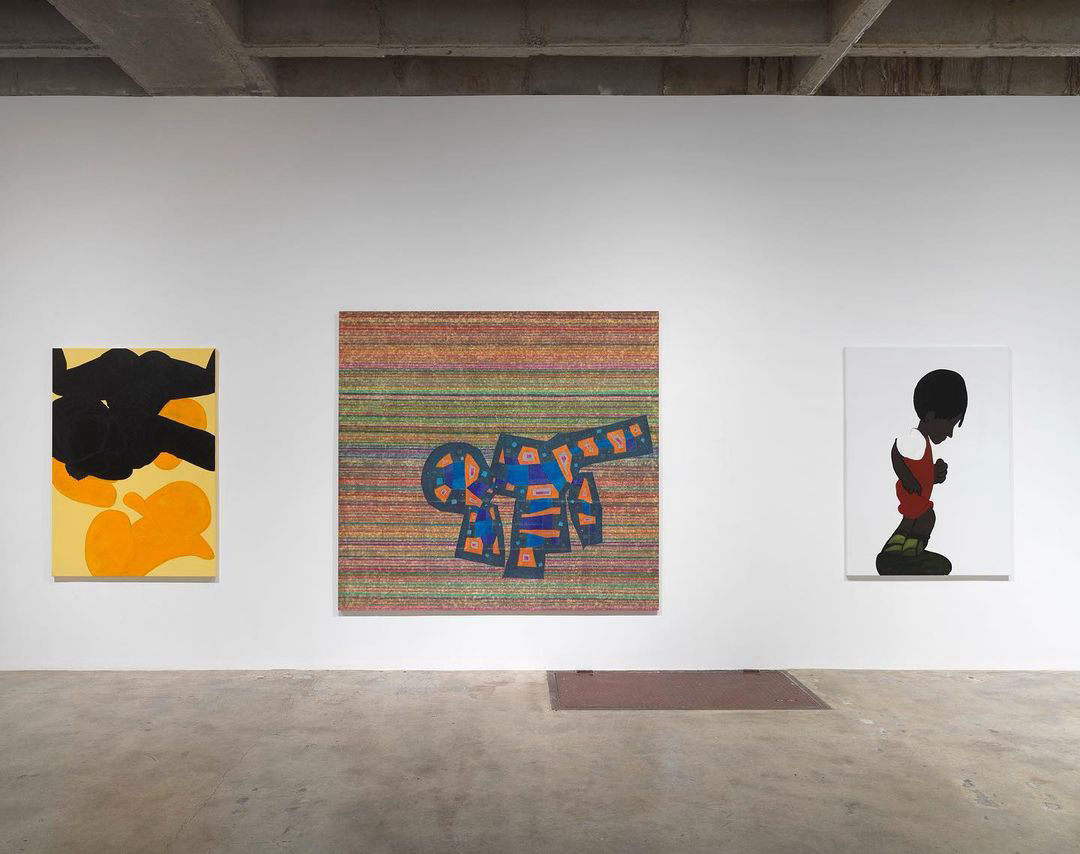
For Omari Douglin, everything begins with a sketch. This includes the first paintings and sculptures the New York-born artist made at LaGuardia High School of Music & Art and Performing Arts all the way up to the works that appeared in “Wave Gods 2” this past spring.
For that exhibition at New York’s Ramiken gallery, a stack of Douglin’s character sketches of Black figures were transformed into a formidable papier-mâché army with the help of custom piñata makers in Mexico.

The act of translation feels reminiscent of the exchange between Arte Povera conceptualist Alighiero Boetti and the Afghani weavers who turned his instructions into the tapestries that comprised his Mappa series, charting the globe’s disputed borders from 1989 to 1991.
Douglin doesn’t mention Boetti specifically, but art history is a preoccupation of his. In his paintings, he frequently cites passages from a canon that stretches from Édouard Vuillard and Martin Kippenberger to Aaron McGruder’s The Boondocks, putting them in dialogue with other signifiers and burnt ends. Douglin literally paraphrased peer Lukas Quietzsch during their doubleheader at Ramiken this fall, depicting his friend’s still-wet abstraction floating in a thought bubble.

Not every reference is as linear. Douglin’s work is often compared to artists like Kippenberger, Michael Williams, and Sigmar Polke because of the way these semi-abstract painters confuse the eye, obfuscating how the work was made to unnerving effect. The difference is that Douglin is not interested in automation (screen printing or otherwise) when it comes to painting.
He wants to probe how the medium could address sculpture without the printer. This was a discovery the now 31-year-old made at Cooper Union where, like many of his classmates, he emulated Wade Guyton and Laura Owens by stacking images in Photoshop.

“It was becoming this technique to maximize production,” says Douglin. “I have a duty in this field to advance it and to think about it in deeper ways. [In the end,] I realized that I didn’t need the computer.” Douglin taught his hand how to layer like a machine: clean, purposeful. Almost digital, but still human.
Room 3557, his curatorial side-gig, is perhaps the largest manifestation of Douglin’s belief in hands-on engagement. The artistic equivalent of Hogwarts’s Room of Requirement, a fictional space that adjusts its nature to accommodate the vision of the inhabitant, the project is Douglin’s valentine to Los Angeles as a recent transplant, his way of diving headfirst into the city and making a place for art for its own sake.
For more about CULTURED's 2023 Young Artists, read our features with Adraint Khadafhi Bereal, Giangiacomo Rossetti, and Kahlil Robert Irving.










 in your life?
in your life?

